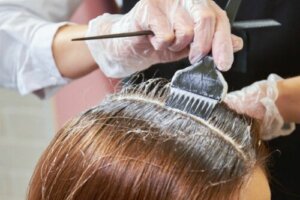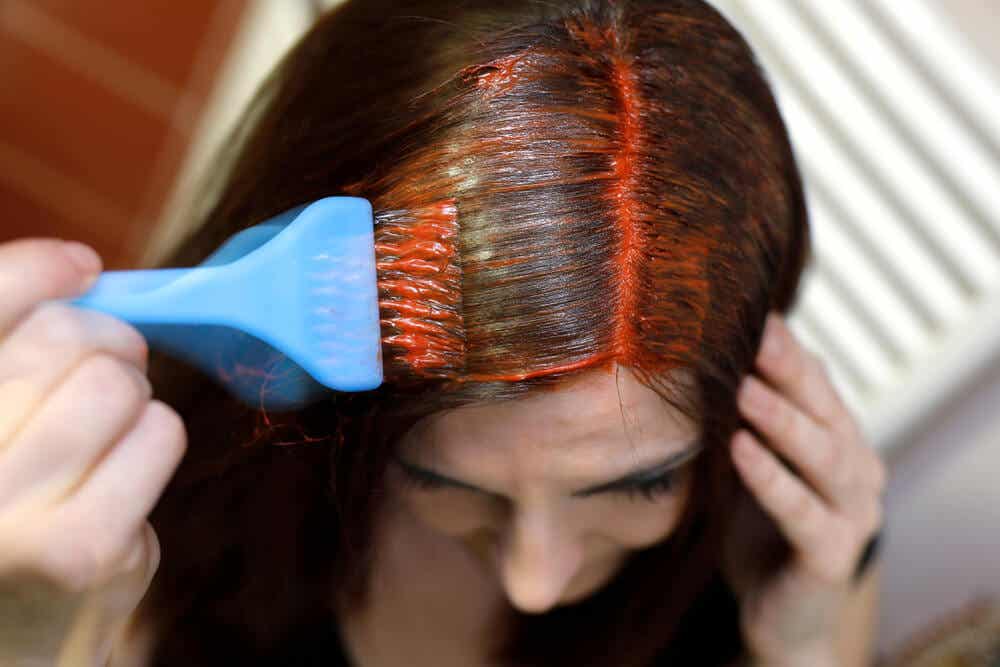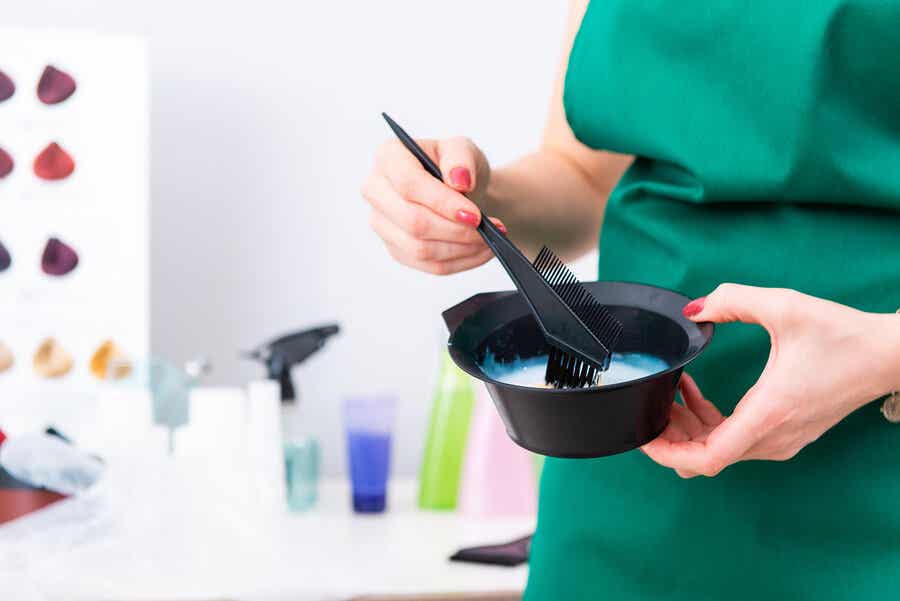Hair Dye Allergy: Causes, Symptoms and Treatments

It seems more and more people are suffering from a hair dye allergy worldwide every year. In fact, the allergic reaction isn’t towards the hair dye itself, but to some of its components. Hair dye products contain several substances that can cause this issue.
Hair dye allergies are caused by a reaction in the immune system. In most cases, it causes allergic contact dermatitis. However, the effect can be much more severe to the point of even being life-threatening.
In any case, it’s important to know the difference between hair dye allergy from hair dye sensitivity. An allergic reaction causes a number of symptoms that may require immediate medical attention. On the other hand, sensitivity causes only mild itching or burning and perhaps a slight reddening of the skin.
What causes hair dye allergy?

In most cases, the substance that causes hair dye allergy is para-phenylenediamine (PPD). It’s an ingredient in the dye that partially oxidizes when mixed with peroxide. In that state, it’s more likely to trigger the allergy.
PPD sometimes goes by other names such as “PPDA”, “1,4-Benzenediamine” and “Phenylenediamine base”. However, it isn’t the only component that causes hair dye allergy. Another chemical that causes an allergic reaction in many people is para-toluendiamine (PTD).
Other substances that are present in some hair dyes and can cause such reactions include the following:
- Cobalt
- Glyceryl thioglycolate
- Ammonia
- Peroxide
- Resorcinol
What are the symptoms?
Hair dye allergies can cause mild or severe symptoms. When there’s only mild itching, burning and irritation it isn’t an allergic reaction, but a manifestation of sensitivity to the product.
The allergy includes the following symptoms:
- Contact dermatitis. There’s a red, scaly, itchy rash. It appears on all areas that have come into contact with the dye, i.e. the scalp and usually the contours of the face, ears and neck.
- Rashes. Rare on the scalp. However, they may be noticed in any other area of the body.
These symptoms may appear up to 48 hours after applying the product. Severe cases of hair dye allergy have the following consequences:
- Facial swelling. Swelling of the eyelids, lips and face in general. It may also occur on the hands or feet.
- Difficulty in breathing
- Nausea and vomiting
- Fainting
Also read: If You Wash your Hair Too Much, Will It Fall Out?
Severe allergic reactions can lead to anaphylactic shock, or “anaphylaxis,” within minutes. This is a delicate, life-threatening condition and is treated as a medical emergency.
What should I do?
If mild symptoms are present, you can manage hair dye allergy with the following measures:
- Rinse the hair with plenty of water and a mild shampoo. The aim is to remove excess dye.
- Apply a mild moisturizer to the affected areas.
- The symptoms of contact dermatitis can be reduced with an over-the-counter topical cream containing corticosteroids.
- Use dilute potassium permanganate. This substance helps to oxidize PPD; this substance only causes allergy if it’s partially oxidized.
- Hydrogen peroxide. This is a mild antiseptic that helps relieve itching and skin irritation.
If the symptoms don’t go away after a few hours, or if symptoms of a severe allergy appear, you should go to the emergency room for proper treatment.
How can I prevent it?

A person can develop an allergy to hair dye at any time, even if they’ve used the product before. Therefore, you should always do an allergy test before using the hair dye.
Simply prepare a small amount of the dye and developer mixture. With a cotton pad, apply behind your ear and cover the area. Wait 24 hours and if there’s no reaction, it’s safe to apply the product. You can carry out the same procedure on the wrist.
It’s very important to carefully follow the instructions that come with the product. Also, there are some measures that can help, such as:
- Use dyes that don’t contain PPD or any of the potentially allergenic substances.
- Emulsify the dye well before removing it.
- Apply plenty of water to the roots when removing the dye. Do this for at least two minutes. Then proceed with the rest of the hair.
- Wash the hair with a non-detergent-based shampoo after removing the dye completely.
- Use lukewarm water, more leaning towards cool rather than hot.
Don’t miss out: Causes and Symptoms of Latex Allergy and its Treatment
What are the alternatives?
There are several products that are alternatives to traditional hair dye. These are options that don’t contain the chemicals that cause allergic reactions. In addition, they usually offer good results and, most importantly, they’re safer for your health.
Some of the alternatives are as follows:
- Hypoallergenic dyes. They don’t contain the most allergy-provoking chemicals. They’re usually semi-permanent, but the finish is very similar to conventional hair dye.
- Henna. It’s a natural dye. However, it’s important to verify that it doesn’t contain PPD, but that it’s vegetable and natural. It provides a reddish or mahogany tone.
- Use natural dyes. There are several substances that give hair color naturally. Although they’re more expensive, the result is excellent. Chamomile, walnut shells, and other vegetables are in this group.
Some semi-permanent hair dyes may contain lead or other hazardous elements. If in doubt, just ask your dermatologist.
Dyeing hair with natural products: the best option
Dyeing your hair is a common practice for many women. However, you should remember that you can develop an allergy to hair dye at any time in life. Therefore, you should never skip allergy testing.
Alternative methods have limitations in terms of color range, permanence, or practicality of use. However, they not only protect against an allergic reaction, but, in the long term, they preserve hair health and result in more beautiful hair.
All cited sources were thoroughly reviewed by our team to ensure their quality, reliability, currency, and validity. The bibliography of this article was considered reliable and of academic or scientific accuracy.
- Di Prisco, M. C., Puig, L., & Alomar, A. (2006). Contact dermatitis due to para-phenylenediamine (PPD) on a temporal tattoo with henna. Cross reaction to azoic dyes. Investigacion clinica, 47(3), 295-299.
- Bozzo, R. B. (2021). Anafilaxia y shock anafiláctico. Rev Chil Anest, 50, 27-55.
- Sotés, P. I., Baldrich, E. S., & Sanz, C. C. Nuevas expectativas para la alergia a tintes del cabello.
- Rev Cent Dermatol Pascua • Vol. 15, Núm. 2. May-Ago 2006. Pérez CS y col. Dermatitis por contacto alérgica a tinte de pelo. https://www.medigraphic.com/pdfs/derma/cd-2006/cd062f.pdf
This text is provided for informational purposes only and does not replace consultation with a professional. If in doubt, consult your specialist.








